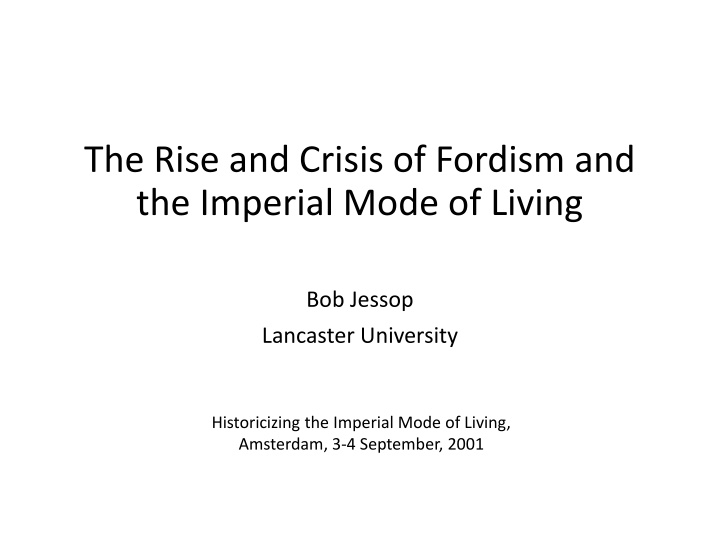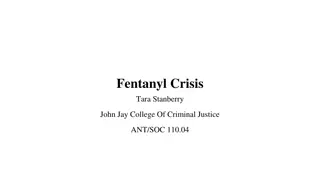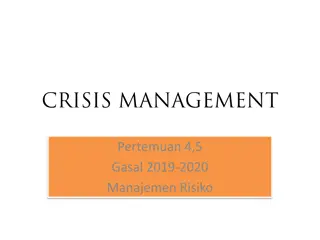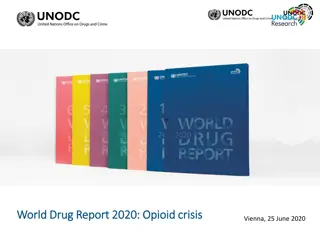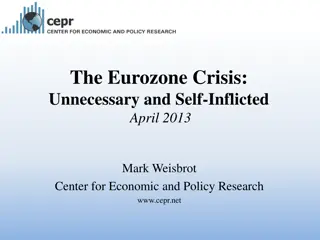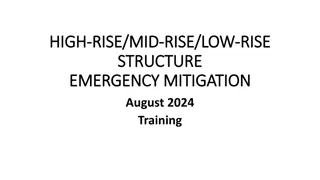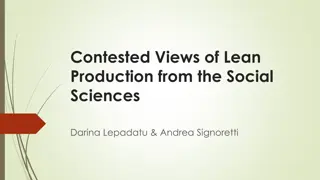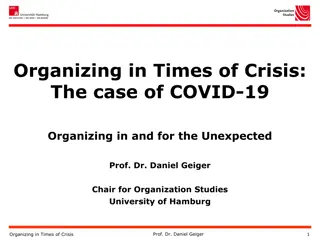The Rise and Crisis of Fordism: Understanding Imperial Living
Foundational contradictions in the capital relation, shifts in accumulation regimes, and the impact of global North-South exploitation on the working class. Explore the consequences of Fordism and the Imperial Mode of Living (IMoL) in a changing world.
Download Presentation

Please find below an Image/Link to download the presentation.
The content on the website is provided AS IS for your information and personal use only. It may not be sold, licensed, or shared on other websites without obtaining consent from the author.If you encounter any issues during the download, it is possible that the publisher has removed the file from their server.
You are allowed to download the files provided on this website for personal or commercial use, subject to the condition that they are used lawfully. All files are the property of their respective owners.
The content on the website is provided AS IS for your information and personal use only. It may not be sold, licensed, or shared on other websites without obtaining consent from the author.
E N D
Presentation Transcript
The Rise and Crisis of Fordism and the Imperial Mode of Living Bob Jessop Lancaster University Historicizing the Imperial Mode of Living, Amsterdam, 3-4 September, 2001
Outline Outline Foundational Contradictions of the Capital Relation Accumulation regimes, modes of regulation Institutional fixes and spatio-temporal fixes Atlantic Fordism and its Crisis The Knowledge-Based Economy Finance-Led Accumulation Beyond current crises to ....? Self-Criticism by Way of Conclusion
Class and social reproduction Dialectics of resistance and absorption Universalization of globalization neoliberalism World market as presupposition and posit Industrial animal farming and material costs Privatization of agricultural research (patents, biotech); international food security regime
Fordism and the IMoL Since Fordism, the exploitation of workers in global North has been alleviated by that of workers in global South. The reproduction of the northern working class has benefitted not only from the institutionalized class compromises of class struggle in the global North itself but also from the possibility of accessing nature and labour- power on a global scale and externalizing the socio- ecological costs of resource- and energy intensive patterns of production and consumption a possibility that has been safeguarded by an imperialist world order (xx)
Fordism and IMoL The integration of workers in the global North into the imperial mode of living has always been a subaltern relationship. The equalizing effects of the imperial mode of living has always been superseded by its hierarchizing effects. And, more recently, the latter have been moving into the foreground (IMoL: xx-xi) Environmental and economic crises and declining working conditions even in core sectors of global North indicate that promises of IMoL are becoming less achievable, not only in global South but also for more workers in global North (xxi) Solution is working class environmentalism that focuses on use-values and social reproduction (xxi).
IMoL Depends on exploitation of humans and nature in global North based on externalization (urban-rural), hierarchization of conspicuous consumption, and contradictions (xxii) Also affects global South (sub-imperial relations), upper and middle classes adopt northern consumption norms, increased labour exploitation, and land-grabbing (xxii) Growth of global domination in ecological unequal exchange based on appropriation of ecological time and space (Hornberg 2010) (xxiii)
IMoL Summarized In sum, the IMoL intends to better understand a global constellation of power and domination that is reproduced through innumerable strategies, practices and intended consequences at all spatial scales: from bodies, minds and everyday actions, through regions and nationally organized societies, to the largely invisible and consciously concealed structures that enable global interactions. That mode also reproduces largely destructive society-nature relations, which imply enormous transfers of biophysical material. This happens within regions and countries but also at a global scale and it is represented by relationships of domination which it simultaneously reproduces (xxiii-xxiv)
IMoL aims 1. How is its normality produced by masking the destruction in which it is rooted? 2. How and why this sense of normality is produced in period of multiple crises? 3. How contemporary crises and conflicts express the contradictions at heart of IMoL and how centres of capitalism try to stabilize their mode of living through isolation and exclusion 4. Demands for alternative must be more radical than green economy or new social contract by linking multiple struggles in solidary economy based on real democracy.
IMoL IMoL based on exclusivity: depends on outside on which to impose its costs. Scope for this shrinking (7) IMoL is both a structural constraint and an extension of scope of action (10) IMoL establishes itself in discourses and world views, it cements itself in practices and institutions, and it is the result of social conflicts in civil society and the state (42) IMoL shapes subjects and their common sense, normalizes it and enables their capacity to act; also contested (42) Habitus links everyday life to structures transfer of value and materials from outside plus dispossessions (47-48)
Dimensions of the IMoL Valorization, accumulation, reproduction via competition on global scale centres, colonies, outside (49) Hegemony and subjectivation based on coherence of norms of production and consumption and ability to externalize socio-economic-environmental costs (54): no master plan but result of conflicts within ruling class and subalterns (55). Becomes part of individual identity and aspirations (56-57) Hierarchization: better life for some depends on subversion of living conditions for others in other places (59-60) Externalization: advantageous access to labour power, care work, resources and sinks elsewhere (62-64)
Use-value of IMoL 1. Links exploitation and domination and everyday life 2. Reveals imperial domination and hierarchy 3. High durability of domination despite crises 4. Reveals extent of current crisis-management 5. Highlights neo-imperial resource management, new forms of extractivism, externalization of crisis responses 6. Exposes scope for absorbing crisis answers (e.g. greening) 7. Contains aspects of struggle and change 8. Identifies conditions and entry points for transformation 9. Provides starting point for ecological projects (64-68)
Periodization of IMoL IMoL a compromise between the interests of those in power and the demands and desires of their subalterns, partially externalizing both many important prerequisites for producing their living conditions and the negative consequences of these conditions (70) Periods: Early capitalism and colonization to end of 18C Liberal capitalism and advancing colonization until 19C and 20C imperialism based on coal and steam power Interwar transition, then Fordism 1950s-70s under Pax Americana Neoliberal capitalist globalization and its crisis (71, 80) These periods are multiply overdetermined rather than purely economically determined (72-3)
Some Foundational Contradictions Basic Form Value Aspect Material Aspect Commodity Exchange-value Use-value a) abstract labour as substitutable factor of production b) sole source of surplus value a) generic and concrete skills, different forms of knowledge b) source of craft pride Labour-power a) monetary cost of production b) means of securing supply of useful labour for given time a) source of effective demand b) means to satisfy wants in a cash-based society Wage a) interest bearing capital, private credit b) international currency c) ultimate expression of capital in general a) measure of value, store of value, means of exchange b) national money, legal tender c) general form of power in the wider society Money Pure value in motion Arbitrage Hedging Derivatives
Value Aspect Material Aspect a) Abstract value in motion as necessary moment in the self- expansion of capital b) source of profits of enterprise a) stock of specific assets to be valorized in specific time and place under specific conditions b) concrete entrepreneurial and managerial skills Productive Capital a) 'Free gift of nature' that is [currently] unalienable b) Alienated and alienable property, source of rents a) Freely available and uncultivated resources b) Transformed natural resources Land Knowledge a) Intellectual Property b) Monetized Risk a) Intellectual Commons b) Uncertainty State Ideal Collective Capitalist Factor of Social Cohesion Taxation Deduction from private revenue or wealth Fund for public goods State Bond Interest-bearing (fictitious) capital Means of reproducing state and its activities
Some Foundational Contradictions Form Value Aspect Material Aspect Commodity Exchange-value Use-value Labour-power Abstract labour Concrete skills Wage Cost of production Source of demand Interest-bearing capital International currency Measure of value National money Money Productive capital Abstract value in motion Stock of specific assets Knowledge Intellectual property Intellectual commons Nature Absolute + differential rent Spaceship earth State Ideal collective capitalist Factor of social cohesion
Significance of contradictions Significance of contradictions These (and other) contradictions are incompressible but vary in importance in distinct stages and varieties of capitalism, posing different sets of r gulation and governance problems Contradictions dilemmas (does State treat wages, including. social wage, mainly as source of demand Keynesian welfare; as cost of [international] production neoliberal retrenchment; or both, e.g. flexicurity?). Scope here for actor-centred institutional approach Handling of these contradictions shapes subsequent crises (e.g., Keynesian welfare national state is weakened as wage qua cost, money qua currency, become weightier, limiting crisis-management capacities, damaging social compromise) This does not determine subsequent spatio-temporal fix(es), which depend on path-shaping initiatives and new accumulation challenges at different scales
Abstract potentials, concrete causes Even before studying capitalist production relations, Marx showed a theory of money and credit was an essential foundation for developing a theoretical account of crisis Accumulation and crisis dynamics rest on interaction: abstract forms of crisis (abstract potential of crisis) in commodity circulation (esp of capitalist commodities) and the basic crisis-tendencies of capitalist production (which may be expressed concretely in various ways) While profit fluctuations are critical to monetary crises that are directly rooted in industrial and commercial crisis, some monetary crises have own causes and affect wider economy through contagion and feedback effects
Accumulation Regimes, Modes of Regulation Accumulation Regimes, Modes of Regulation Petit (1999) suggests one of the RA s five structural forms will predominate in each period and shape its institutional dynamics: wage relation dominated Fordism, then came competition (broadly conceived). This provides a general grid to define broad features of a post Fordist regime. There is no sound reason to assume only one structural form will dominate and it is unclear what dominance means; I build on Petit s insights and combine them with Althusser s ideas on the materialist dialectic (Althusser 1977). I propose that accumulation regimes and their modes of regulation can be distinguished in terms of, inter alia, the principal contradictions and their primary and secondary aspects when they are en r gulation and, later, in crisis
Regulation-Theoretical Concepts Accumulation regime : a complementary pattern of production and consumption that is reproducible over a long period; Mode of regulation: emergent ensemble of norms, institutions, organizational forms, social networks, and patterns of conduct that can temporarily stabilize an accumulation regime despite conflictual and antagonistic nature of capitalist social relations Wage relation: labour markets, individual and social wages, lifestyles Enterprise form: internal organization, source of profits, forms of competition, ties among enterprises and/or banks State: institutionalized compromise between capital and labour, forms of state intervention Money: form and emission, banking and credit systems, allocation of capital to production, national currencies and world monies, and monetary regimes International regimes: trade, investment, monetary, and political arrangements that link national economies, nation states, and world system
Elaborating the Concepts Basic Structural Forms constructed-reproduced through semiosis and institutionalization forms can be analysed as relations of domination forms problematize functions Institutions ensembles of social practices that are regularly and continuously repeated, that are linked to defined roles and social relations, that are sanctioned and maintained by social norms, and that instantiate basic structural forms, thereby having a key role in social formation Institutional instantiation specific organizations, routinized practices, etc.
Entry Points and Standpoints Crises cannot be understood in all their complexity in real time (if ever) To be able to act, we must reduce complexity: this occurs through different entry points, which are hard to join up, and from different standpoints, often conflicting Entry points include: ecological, technological, financial, productive, legal, fiscal, political, educational, governmental, religious, ethical, Standpoints include: technology vs social relations, capital vs labour, productive vs parasitic, north-south, gender, growth-no-growth, global-local,
Historical Institutionalism or Form Analysis? Historical institutionalism allows distinctions among forms or stages of capitalism and facilitates historical-comparative studies of capitalist societies Institutional complementarities and micro-foundations can explain relative stability of specific VoCs (up to a point) Institutionalism can t explain generic features of capitalism, ignores roots of crisis in basic contradictions of capital relation instability of any institutional, spatio-temporal fix Mid-range analyses also ignore generic constraints rooted in self-organizing dynamic and contingentdominance of profit- oriented, market-mediated principle of societal organization (Vergesellschaftung)
Analysing Growth Regimes Regimes have different patterns of economic forms: each form can be a principal or secondary site of institutional and spatio-temporal fixes; primary and secondary aspects change between regime enr gulation and crisis Atlantic Fordist tables show (a) how Atlantic Fordism en r gulation was organized; (b) how typical configuration was disorganized as primary and secondary aspects were reversed, creating crisis in Atlantic Fordist growth regime It does not follow that crisis of Fordism (or other regime) can be resolved by refocusing regulation on previously secondary aspects of contradictions; as Petit notes, new regimes more likely to be linked to primacy of other forms/contradictions
Institutional Fixes Institutional fix: complementary set of institutions that, via institutional design, imitation, imposition, or chance evolution , offers provisional, partial, and relatively stable solution to co-ordination problems involved in economic, political, or social order (e.g., an accumulation regime) Historical institutionalism often proposed as suitable for analysing genesis of institutional fixes and their effects In strategic-relational terms, institutions have specific biases, favouring some actors, alliances, identities, interests, projects, spatio-temporal horizons, etc
Spatio-Temporal Fixes set spatial and temporal boundaries within which the always relative, partial, and provisional structural coherence (and, so, institutional complementarities) of given regime are secured; externalize material and social costs of securing such coherence beyond spatial, temporal, and social boundaries of fix by displacing them elsewhere and/or deferring them. Even within these boundaries, we find that some classes, class fractions, social categories, or other social forces located within these spatio-temporal boundaries are marginalized, excluded, or subject to coercion.
Organizing Spatio-Temporal Fixes Hierarchization: some contradictions more important Prioritization: priority to one aspect of a contradiction or dilemma over the other aspect Spatialization: rely on different scales and sites of action to address one contradiction or aspect and/or displace problems linked to neglected aspect to marginal or liminal territories, spaces, places, scales Temporalization: alternate between treatment of different aspects or focus one-sidedly on a subset of contradictions, dilemmas, or aspects until it becomes urgent to address what had hitherto been neglected
TERRITORY PLACE SCALE NETWORKS Integrating places into a territory, managing uneven development Inter-state system, state alliances, multi-area government Actually existing frontiers, borders, boundaries Multi-level government TERRITORY Core-Periphery relations, borderlands, empires Locales, milieux, cities, sites, regions, localities, globalities Local/urban governance, partnerships Glocalization, glurbanization PLACE Transversal parallel power networks, non-governmental international regimes Scalar division of political power (unitary state, federal state, &c) Local global areal (spatial) division of labour Nested or tangled scalar hierarchies SCALE Cross-border region, virtual regions (BRICS, Four Motors, etc) Global city networks, poly- nucleated cities, intermeshed sites Networks of differently scaled places Networks of networks, space of flows NETWORKS
Success or Failure A relative success? Or a double failure? RA not alone in finding it hard to dislodge mainstream economists not convinced to standard economics stop regarding extra-economic phenomena as irrelevant, marginal, exogenous, ceteris clear evidence of progressive development paribus issues of Parisian paradigm mainstream social scientists not persuaded catalytic impact in reorienting social and to abandon attempt to explain capital economic analysis in the social sciences accumulation without serious and even if in unintended ways systematic reference to economic as well as regulationist ways of thinking have become extra-economic mechanisms. normalized part of thinking in social sciences hence less often cited
Return to the sources? Re-reading Kapital, TheorienderMehrwert (e.g., Volume 3, chapter 17), etc Re-reading Marxian and critical work on world market, imperialism, and forms of internationalization Re-reading Gramsci and neo-Gramscian theory Updating analyses in light of recent changes in bases of accumulation, forms of competition, etc.
Atlantic Fordist STF Secondary Aspect Basic Form Primary Aspect Key institutional fixes Spatio- temporal fix Wage relation Demand Cost Keynesian state + rising productivity Creation of National Economies Money National Money International currency Keynesianism + Bretton Woods & role of USD Managing International Relations State Social Cohesion Economic Intervention Welfare state + spatial planning National state and local space Capital Productive capital as stock of assets for valorization Money as most abstract expression of capital Reinvested Fordist profits + financing of consumption Circuits of Atlantic Fordism Nature Resources Sink Imperial subordination Centre-(semi-) periphery nexus
Atlantic Fordist Crisis Secondary Aspect Basic Form Primary Aspect Key Institutional Crisis Spatio- temporal fix Cost Demand Internationalization changes role of (social) wage Crisis of national crisis management Wage relation International currency National Money Breakdown of Bretton Woods, change in USD Crisis in international regimes Money Social exclusion, new social movements Increasing economic intervention Fiscal, rationality, legitimacy, and hegemonic crises Declining power of national states State Money as most abstract expression of capital Capital as stock of fixed assets valorized in given time-place Disruption of Fordist circuits Atlantic Fordism Capital Environmental crisis (sink) Resource Imperial resistance Imperial crisis Nature
Explanation Principal structural forms are wage relation and money, others are complementary when Fordism is stable Primary aspect of wage in Fordism en r gulation was as source of demand, primary aspect of money was national Secondary aspect of wage handled via Fordist productivity increases, secondary aspect of money via BW institutions Spatio-temporal fix depended on embedding of Fordism in national and international order Society-nature relations focused on access to resources Crisis emerges when internationalization and other spatio- temporal changes reverse primary & secondary aspects of contradictions, undermining dominant institutional fixes
Knowledge-Based Economy Primary Aspect Aspect Basic Form Secondary Key Institutional Fix Spatio- temporal fix Capital Valorization of knowledge- and design-intensive capital Capital as intellectual property Competition state plus IPR regimes (with risk of creating anti-commons) Knowledge- intensive clusters, cities, regions Compet- ition Innovation-led, Schumpeterian competition Race to bottom and fall-out from creative destruction Increased role of global trade regimes, IP regimes, network economy Neo-mercantilism at different scales as basis for global expansion (Social) Wage Relation Production cost (even for mental labour) Source of demand Flexicurity for full employability, aiding demand and global competitiveness Controlled forms of labour mobility, globalized spatial division of labour State Competition state oriented to innovation- led growth Third Way as a flanking and supporting mechanism Schumpeterian Workfare Post- National Regime Multi-scalar meta- governance (e.g., open method of coordination) Innovation in resource access and value cycles Innovation in sink capacities Hierarchy of green bio-economy Global South as resources + sink Nature
Finance-Dominated Accumulation Primary Aspect Secondary Aspect Key Institutional Fix Spatio-temporal fix Basic Form Capital Fast, hyper- mobile money (+ derivatives) as general form Valorization of capital as fixed asset in specific time- place De-regulation of financial markets, state targets price stability, not jobs Free trade without national or regional state controls (Social) Wage Relation Private wage plus credit as demand source Social wage as (international) cost of production Numerical flexibility; time flexibility; new forms of credit War for talents plus race to bottom for most workers and squeezed middle State Neo-liberal policy measures and Ordoliberal constitution Flanking measures plus disciplinary measures Free market plus strong state (authoritarian statism) Endorses intensified uneven development at many sites + scales Internat- ional regime Create space of flows for all forms of capital Compensate uneven development, adapt to rising economic powers Washington Consensus regimes Centre-periphery relations tied to US hegemony and its relays Nature Neo-extractivism, greater trade and unequal eco-costs Expansion of industrial agriculture Carbon pricing and trading; ecological modernization Global carbon market; green grabbing
Finance-Dominated Accumulation in Crisis Basic Form Primary Aspect Secondary Aspect Key Institutional Fix Spatio-temporal fix Rising antagonism between Main Street and Wall Street (City, etc) De-regulation crisis of TBTF predatory finance + contagion effect Protectionism in core economies, growing resistance to free trade in periphery Epic recession based on debt-default- deflation dynamics Capital Credit crunch puts private Keynesian- ism into reverse Austerity reinforces D4 and leads to double dip recession Growing reserve army of surplus, precarious labour Global crisis and Internal devaluation -> reproduction crisis (Social) Wage Political capitalism undermines Ordoliberalism Austerity policies meet resistance, harsher discipline Crises in political markets reinforce post-democracy Cannot halt uneven development at many sites + scales State Unregulated space of flows intensifies triple crisis Multilateral, multi- scalar imbalances and race to bottom Crisis + rejection of (post-)Washington Consensus Crisis of US hegemony, BRICs in crisis and disarray Global Regime Lost biodiversity; crisis of unequal exchange; end of cheap nature Nature Existential insecurity in global South and lack of resources New forms of imperialism New forms of multi- lateral partnerships
Explanation Tables show two alternative post-Fordist growth scenarios, with their corresponding principal structural forms and respective complementary forms, if they are to be en r gulation Two principal forms in KBE are capital and competition, in finance-dominated accumulation, they are money and While KBE seeks to valorize knowledge, emphasis on IPR should be secondary; competition Spatio-temporal fixes depend on embedding of KBE in multi- scalar knowledge society, on embedding of finance-dominated accumulation in Ordoliberal framework Both growth regimes likely to be less stable in practice than Atlantic Fordism because they co-exist and it is correspondingly harder to secure their respective forms of embedding
First Second Generation Third Generation Generation ACCUMULATION REGIMES History of accumulate- ion regimes in France Macro- and sectoral econometric models Alternative post-Fordist scenarios Towards a finance-led accumulation regime? The novelty of intensive accumulation Varieties of Fordism and crisis tendencies Why are transitions so difficult? Fordism in the USA and France Alternatives to classic Fordism (small open economies, Japan, state socialism, Latin America, East Asia) Critique of a possibly resurgent US model Stylized facts about Fordism and its crisis Globalization and the rescaling of regimes (especially in EU) Fordist reproduction schemas Challenges to Fordist growth dynamics
First Second Generation Third Generation Generation WAGE RELATION Labour power is a fictitious commodity Varieties of capitalism Post-Fordist scenarios Crisis of Fordism and defensive versus offensive flexibility International competit- ion and wage relation Liberal competitive vs Fordist wage relation Training systems and education Role of Institutionalized compromise Welfare states & social security systems Crisis in welfare state Source: Simplified and extended version of tables in Boyer and Saillard (2002c)
First Second Generation Third Generation Generation INTERNATIONAL REGIMES International regimes as expression of interests of hegemonic power Scope for global governance without a hegemon Crisis of international postwar settlement & erosion of American hegemony Globalization and destabilzation of national regimes Diffusion of Atlantic Fordism from USA Uneven development as motor of growth Regional integration and regional blocs Refusal to treat Third World as the periphery of advanced capitalism New sources of disequilibrium (ecology, N-S divide) New international division of labour
First Second Generation Third Generation Generation MONEY Money is a fictitious commodity Forms of money Financialization and primacy of hyper- mobile finance capital Crises in monetary regimes Esoteric dynamic of capitalism rooted in value relations Financial arbitrage Monetary policy as an expression of creditor- debtor relations Neo-liberal austerity and re-assertion of monetary constraint Role of credit money in Fordist accumulation Shifts in monetary regime & transition in accumulation regimes Stagflation and crisis of Fordism regime Monetary regime and types of wage relation
First Second Generation Third Generation Generation ENTERPRISE FORM AND COMPETITION Types of competition in sectoral and national regimes (esp. Japan) Internationalization and product differentiation Liberal competition vs monopoly competition Inter-company and local relations in innovation Productive systems and their preconditions Liberal market prices vs cost-plus (administered) prices Social systems of innovation Accumulation regimes not governed by competitiveness Complexities of market, hybrid governance forms National frameworks of enterprise forms and competition Corporate governance
First Second Generation Third Generation Generation STATE Public spending and Types of institutional- Towards a regulationist institutionalized com- promise ized compromise and national models theory: the coupling of economic and political logics Limited state versus Relative autonomy of embedded state political and limits of state intervention Taxonomy of state- economy relations and types of welfare state State as guarantor of wage-labour nexus Economic order of political regimes Fisco-financial regimes Accumulation regimes shape nature & limits of economic policy National styles of eco- Path-dependency and nomic policy diversity of economic policy regimes ERIC model (Delorme)
An alternative approach CAPITALISM Traditional commercial capitalism Political Capitalism Rational Capitalism Mode #1 Mode #2 Mode #4 Mode #5 Mode #6 Mode #3 Profit on market from force and domination Predatory political profits Trade in free markets & capitalist production Capitalist speculation and finance Profit from unusual deals with political authority Traditional types of trade or money deals Weber s Modes of Capitalist Profit Orientation (Based on Swedberg 1998)
A Marxian View of Capitalism Wealth appears as immense accumulation of commodities Commodity form generalized to labour-power (which is a fictitious commodity but treated as if it were a commodity) Duality of labour-power as concrete labour and labour time A political economy of time (note especially the constant rebasing of abstracttime treadmill effects) Key role of money as social relation in mediating profit-oriented, market-mediated accumulation process Essential role of competition in dynamic of capitalism Market mechanism cannot secure all conditions of capitalist reproduction (even ignoring labour process)
Categories for Analysis of Capital Division of labour plus division of property among productive capitalists Productive capital (constant and variable) plus capital of circulation (commodity and money capital) Capital as functioning capital Commercial credit reduces demand for capital Merchant s capital (commodity- dealing capital and money-dealing capital) has necessary functions Bank credit concentrates spare funds and savings of all classes in hands of money-dealing capitalists Interest-bearing capital (titles of ownership or financial assets) Fictitious capital when viewed in terms of capitalized income streams MMC employed neither in production or circulation - useless from viewpoint of capital, value set by capitalization of revenues relative to interest rates Capital as property Fictitious capital (narrowly defined) Money lent as MMC directly or via banks to state (e.g., to finance wars, public expenditure, state activities) Basis for exchange of money against ownership titles can be multiplied many times over (leverage)
Finance Finance- -Dominated Accumulation Dominated Accumulation
Explanation Principal structural forms are money and (social) wage relation, others are subordinated to these Primary aspect of money is (world) money as abstract expression of capital in space of flows, primary aspect of (social) wage is cost of production Secondary aspect of money (real assets) treated via neo-liberal policy boost to post-tax profits, secondary aspect of (social) wage relation handled via private credit and lean welfare state Spatio-temporal fix depends on embedded neo-liberalism tied to new, disciplinary constitutionalism Crisis emerges when (il-)logic of neo-liberalism resurfaces after short-term boost from accumulation through dispossession
A Comment on Money and Finance Money functions as money and as capital. In FDA, fictitious credit and fictitious capital (esp interest-bearing capital, reinforced through derivatives) are crucial causal factors. Cf. means of deferred payment (Marx and Minsky) and as world money (Marx) are especially significant To put NAFC in its place, study dynamics of production and finance in world market and, in particular, include all five functions of money in their relation to both aspects Both must be related to hierarchy of monies (commodity money, bank money, central bank money, state money, world money) and their roles in crisis situations without world state, world money, or hegemonic world currency
The Global Financial Crisis The Global Financial Crisis
Epic Recession Rasmus (2010) distinguishes normal recession, epic recession, and great depression; NAFC has generated an epic recession in some (not all) advanced economies Normal recession (whether rooted in production and/or monetary crisis) turns into epic recession through vicious interaction among debt, default, deflation Debts that cannot be settled produce default, distressed selling to settle other debts leads to deflation, default and deflation aggravate situation of debtors, and so on Whether epic recession then leads to great depression depends on wider conjuncture and policy responses
